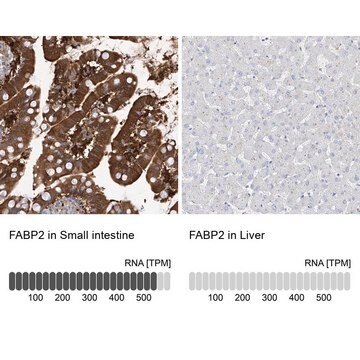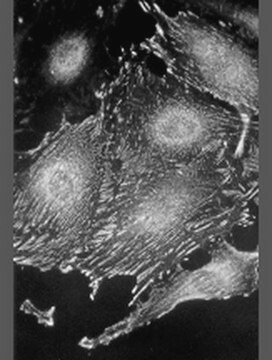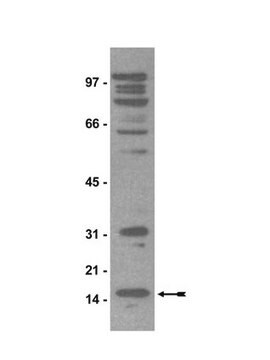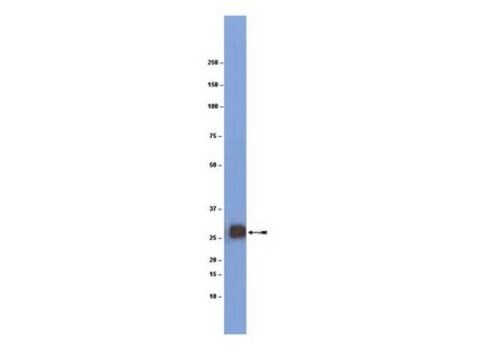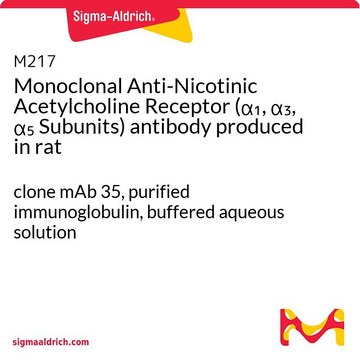MABN698
Anti-FABP2 Antibody, clone 9A9B7B3
ascites fluid, clone 9A9B7B3, from mouse
Sinonimo/i:
Fatty acid-binding protein, intestinal, Fatty acid-binding protein 2, Intestinal-type fatty acid-binding protein, I-FABP
About This Item
Prodotti consigliati
Origine biologica
mouse
Livello qualitativo
Forma dell’anticorpo
ascites fluid
Tipo di anticorpo
primary antibodies
Clone
9A9B7B3, monoclonal
Reattività contro le specie
human, mouse
tecniche
flow cytometry: suitable
immunofluorescence: suitable
immunohistochemistry: suitable
western blot: suitable
Isotipo
IgG1
N° accesso UniProt
Condizioni di spedizione
wet ice
modifica post-traduzionali bersaglio
unmodified
Informazioni sul gene
human ... FABP2(2169)
Descrizione generale
Immunogeno
Applicazioni
Immunohistochemistry Analysis: A 1:200-1,000 dilution from a representative lot detected FABP2 in human small Intestine tissues.
Flow Cytometry Analysis: A 1:200-400 dilution from a representative lot detected FABP2 in LOVO cells.
Optimal working dilutions must be determined by end user.
Neuroscience
Developmental Neuroscience
Qualità
Western Blotting Analysis: A 1:2,000 dilution of this antibody detected FABP2 in human small intestine tissue lysate.
Descrizione del bersaglio
Linkage
Stato fisico
Stoccaggio e stabilità
Handling Recommendations: Upon receipt and prior to removing the cap, centrifuge the vial and gently mix the solution. Aliquot into microcentrifuge tubes and store at -20°C. Avoid repeated freeze/thaw cycles, which may damage IgG and affect product performance.
Risultati analitici
Human small intestine tissue lysate
Esclusione di responsabilità
Non trovi il prodotto giusto?
Prova il nostro Motore di ricerca dei prodotti.
Codice della classe di stoccaggio
12 - Non Combustible Liquids
Classe di pericolosità dell'acqua (WGK)
nwg
Punto d’infiammabilità (°F)
Not applicable
Punto d’infiammabilità (°C)
Not applicable
Certificati d'analisi (COA)
Cerca il Certificati d'analisi (COA) digitando il numero di lotto/batch corrispondente. I numeri di lotto o di batch sono stampati sull'etichetta dei prodotti dopo la parola ‘Lotto’ o ‘Batch’.
Possiedi già questo prodotto?
I documenti relativi ai prodotti acquistati recentemente sono disponibili nell’Archivio dei documenti.
Il team dei nostri ricercatori vanta grande esperienza in tutte le aree della ricerca quali Life Science, scienza dei materiali, sintesi chimica, cromatografia, discipline analitiche, ecc..
Contatta l'Assistenza Tecnica.